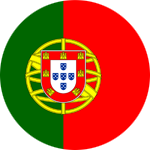The wind can change your plans
People are sitting around and writing their diary. In the night, the moon is shining and the first stars are rising on the dark sky. Soon we will be sailing out of the calm Kiel Channel. I am standing on deck, and we are singing a few songs before the seasickness will catch us. It’s still hard to believe that this is the start of our beautiful and unique adventure.
In this moment I don’t know how strong the wind will be on the open sea, where the big seasickness story begins. We reach the speed of nearly 9 knots. That’s very unusual for the North Sea, but I love it when the waves are this high. Then, on 21st October, the order comes – we will anchor near Margate in the southeast of England before entering the English Channel because of the unfavourable winds there from the south and southwest. But the anchor spot is nice and it’s a great chance to recover from the seasickness. We are all flashed by the beautiful colour of the sea. Everyone thinks – where is my camera?
The ship routine begins to rule the day. From time to time you can see us cleaning the ship, eating or writing dairy. In the night watches it is quiet, from time to time a person talks to navigate and during the manoeuvres there is a lot of movement and shouts. On the horizon, you can see a few lights swimming on the black water. Is this land, or probably a ship? The water sweeps over the deck with loud and relaxing noises. These night watches are very calm and relaxing in the beginning. Imagine – standing on deck in warm clothes and with a good mood, you can see many stars and sometimes even shooting stars – a dream of every sailor. Crossing endless oceans with sometimes a storm and the sails filled with wind.
But who is the person hanging over the railing? Oh no, I forgot to say that the wind is strong and the waves are high, so everything is moving and many people have been caught by the seasickness. Some people don’t even feel anything, they are lucky!
During the next period of sailing in the English Channel we reach up to 8 knots, without the motor. Cool! Our next stop on October 23rd is the Isle of Wight, which is a small island in the south of England. In groups, we learn a lot about the security on board. The climbing in the rigg is also fantastic. In the night, there is a little problem with the anchor. The winds and the current were too strong for the ship, so the anchor has slipped and the crew has to drop the anchor again. Luckily, after that the anchor stays in its place.
In these last days we’re also getting to know the sea life around us. One day, we’re sitting on deck having lunch. Suddenly, everyone is running to the starboard side and you can hear people shout “Schweinswale!” (porpoises). Another day, two little birds decide to come with us and make the Thor their home, too. Some of us name them Piet and Goldi.
So, all in all our first meeting with the rough North Sea and our anchor spots in the English Channel was a bit exhausting for some of us but also very interesting, so we all learned to love it.

